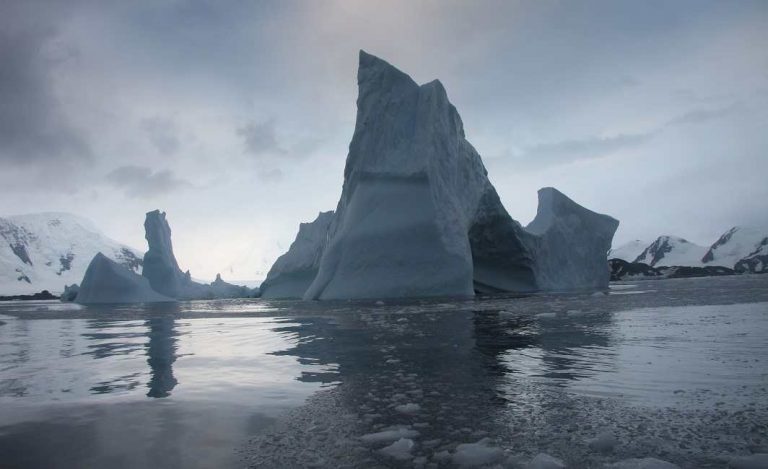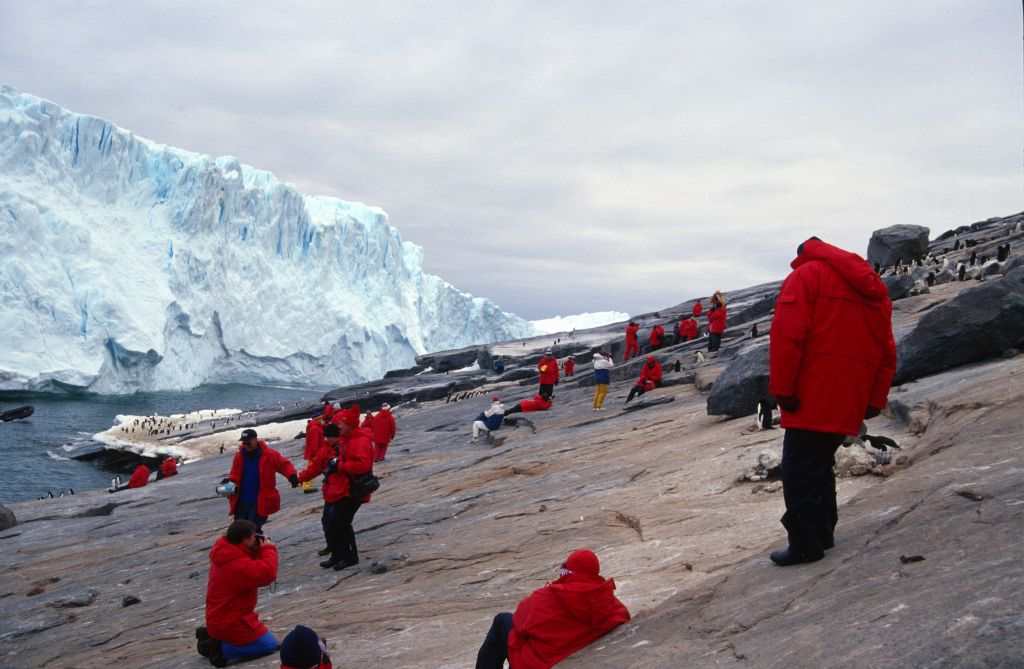
India is framing laws for Antarctica, ostensibly to protect its bases there. But is it actually preparing to mine the mineral resources of Antarctica before other countries do?
~By Usha Rani Das
India has taken a special interest in the coldest, remotest and most secluded regions on earth—Antarctica—and is framing laws to safeguard its interests there. At a recent press conference, Ministry of Earth Sciences secretary Madhavan Nair Rajeevan said: “India doesn’t have laws for Antarctica. We are preparing it and it is in circulation in the law ministry… The law entails regulating our activities. When we go there, if we do a mistake, what will happen? It is about safeguarding our own interests.”
The draft of the law is ready and has been given to the law ministry for approval. India is also poised to replace the existing research station, Maitri, in the Antarctica with another base station, the secretary said.
OIL-HUNGRY NATIONS
After Antarctica was discovered in the 19th century by the Russians, several countries started their own expeditions with the aim of claiming sovereign rights over it. Its profound effect on the global climate and oceans attracted scientists from across the world. For more than a century, expeditions and research activities continued unhindered. It was only around the 1950s that scientists realised the need for a treaty to protect the pristine eco-system of the region. Hence, in 1959, the Antarctic Treaty was signed by 12 countries that govern the “economic, political, social, scientific, and environmental issues on the continent” and it banned any military activities. Till date, 53 countries have signed the treaty. It states: “The continent was to be dedicated to scientific research, a unique ‘world background’ against which to gauge humanity’s impact on the planet.”
Antarctica, the 14 million sq km ice-shelf nation, suffers debilitating conditions like wind-blown litter and chemical contamination by oil spills….
But the original treaty failed to prevent the extraction of resources. The issue was first raised by New Zealand and the UK in 1970 and dominated Antarctic politics for the next 20 years. First, the Convention on the Regulation of Antarctic Mineral Resources Activities (CRAMRA) was signed. But as it wasn’t ratified with enough support, member nations came up with the Protocol on Environmental Protection to the Antarctic Treaty, also known as the Madrid Protocol in 1991.
This became one of the most important protocols till date. Under the Antarctic Environmental Protocol (AEP), there should be no mining activities and waste cannot be dumped till the protocol is ratified in 2048. But it comes with a proposed walkout clause, introduced by the US, which allows a nation to withdraw from the protocol if an amendment to approve mining has not been ratified within three years of being submitted. It can then begin unilateral mining operations two years later. Hence, this clause can be extorted by countries to start mining activities without any legal obligations.
The US believed such a clause necessary due to the need for consensus. AEP stated: “Article 25 stipulated that any amendment to allow mining after 50 years must first be adopted by a majority of all member nations, and then ratified by three-fourths of the voting nations, including all 26 consultative parties at the time the protocol is adopted.” US chief negotiator, Curtis Bohlen, feared this would result in a veto power whereby “you could have one nation block the will of the rest” and to counter this power, introduced the walkout clause—which ironically would allow one nation seeking to mine to effectively block the rest. If one combines this with the CRAMRA that allows a country to keep any commercially viable information obtained secret for 10 years, Antarctica becomes a delicious bait surrounded by hungry sharks waiting to feed on it as soon as the door opens in 2048.

Sean Coburn of the Columbia Law School states in his paper, “Eyeing 2048: Antarctic Treaty System’s Mining Ban”: “As the climate warms, commodity prices rise, and new technologies make polar extraction cheaper, state actors have begun eyeing the vast mineral wealth of Antarctica. The continent is governed by consensus under the Antarctic Treaty System, yet questions of ownership of the mineral wealth remain unanswered. States seeking to set a geopolitical precedent may undertake to begin exploitation even if cost factors are not met by 2048 when the Protocol comes up for review. Because of the walkout clause contained in the mining ban, environmental advocates should be wary of any attempt to modify the Protocol.”
INDIA’S STAND
India joined the Antarctica Treaty System on August 1, 1983. Though most of the developed nations opposed the Madrid Protocol of 1991, India signed on behalf of the developing countries who were supporting it. India joined the treaty when most of the developing countries regarded it as an echo of colonialism. This ensured that rich nations could treat the continent as their private hunting ground. India had at first argued that the right place to decide the future of Antarctica was the United Nations and had wanted the continent to be declared as the “Common Heritage of Mankind”. But in 1981, it reversed its stand and joined the Antarctic club. The then joint secretary of the Department of Ocean Development, IG Jhingran, had reasoned: “It’s a changing world and we have to make adjustments in our stand. We better get some space in Antarctica before it gets too crowded.” He argued that India would have a better say in Antarctica’s affairs through this strategy and in fact, could still fight for the cause of developing nations. But the world saw it as hypocritical.
Also, India’s 1981 Antarctic expedition was the first sent by any nation entirely outside of the treaty framework. Not only this, India was also one of the reasons that the Larsemann Hills dispute took place in 2014. India had wanted to build a year-round research base at Larsemann Hills in Antarctica as it offers scientific advantages—it was close to the sea and allowed for unique studies of marine and ice biology and research. Despite facing opposition from Russia, China and Australia, it went ahead with its plans and set up Bharti, a research station, in 2015. Through this decision, India made enemies and since then, it is being closely watched by environmentalists and treaty nations. Campaigners said that India has been quietly surveying the site for years. James Barnes of the Antarctic and Southern Ocean Coalition, a pressure group, said the process to protect Larsemann Hills began six years ago and India decided not to join it. It is also being speculated by researchers that India is on a secret hunt for minerals like other nations.
MINERAL WEALTH
Chhaya Bhardwaj, managing director of Indian Oceans Society at The Islands Society (an international non-profit organisation) told India Legal: “There is a looming threat of countries monopolising the mineral wealth once mining starts in the region. Countries might establish ownership over the most valuable wealth. India does not want to be left behind. And since national laws would have an advantage over international laws, India seems to be on track.” She says this would create a conflict with other treaty nations. “India’s double-sided stance at ATS will attract suspicious glances. Most of them are a way to safeguard its future mining activities,” she adds.
Amidst all the conspiring by nations, Antarctica, the 14 million sq km ice-shelf nation, suffers debilitating conditions. In a paper presented at the 2006 Antarctic treaty meeting in Edinburgh, it was found that there was evidence of wind-blown litter, physical degradation of the ice-free surface and chemical contamination by oil spills in the freshwater lakes at Larsemann Hills. There are currently 75 research stations in the continent and this number is gradually growing.
All these have affected not just the region’s peace, but global climate too. The only thing that has prevented massive floods that would devour the earth is Antarctica’s ice-shelf. More than 60 percent of the freshwater on earth is locked up in Antarctica’s ice sheets.
A 2016 study by DeConto of the University of Massachusetts and David Pollard of Pennsylvania State University raised alarm after they found that both West Antarctica and some parts of East Antarctica were vulnerable to continued global warming.
It is a fragile eco-system and it is time we guard it for future generations.

